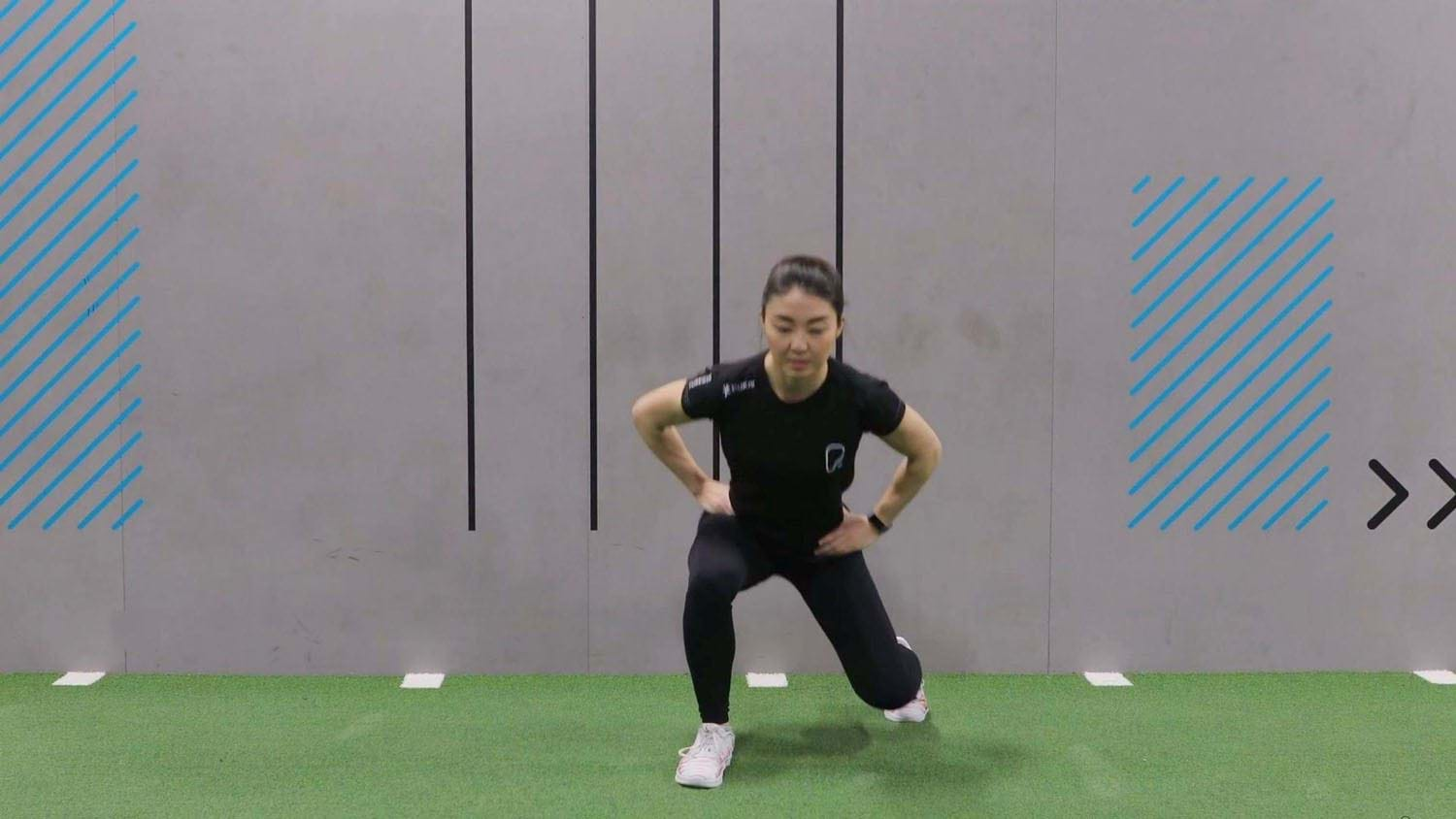Clock Lunges
What Is A Clock Lunge?

The clock lunge is a lunge variation that combines forward, reverse, and lateral lunges one after another, as if stepping on to the 12, 3, 6, 9 hours on a clock. You can make this harder by stepping on to every hour, for a total of 12 lunges. This will work the muscles in different angles and help to strengthen the legs through more ranges.
Clock lunges work all the muscles in the lower legs, including the quads, hamstrings, calves, glutes, hip flexors, and adductors, as well as the core. Combining three lunges mean the leg muscles are challenged in multiple ways throughout the exercise. The forward lunge emphasises the quads, the reverse lunge emphasizes the hamstrings and glutes, and the side lunges emphasise the adductors.
Like all lunges, clock lunges are a unilateral exercise. Training the legs individually allows strength imbalances to be reduced, which can reduce the chance of injury and improve overall strength. All lunges help to improve balance and coordination but the complex nature of clock lunges even more challenging, helping to improve these further.
Check out our other lunge variations: forward lunges, lateral lunges, curtsy lunges, walking lunges, sprinter lunges.
Commonly Asked Questions On Curtsy Lunges
The clock lunge is a challenging exercise that combines forward, reverse, and side lunges to challenge the lower body and core.
Clock lunges strengthen the muscles in the lower body, improve balance, stability and coordination, and build core strength. It can also reduce muscle imbalances between the two legs to reduce the risk of injury.
Clock lunges work the quads, hamstrings, calves, glutes, hip flexors, adductors, and core. This exercise also strengthens the smaller stabilising muscles to improve balance and stability.
Clock Lunge Tips
Maintaining good form throughout the clock lunge is key to avoiding injury and ensuring the correct muscles are worked. Keep your core braced and your chest and chin up throughout the exercise. If you struggle with remaining balanced, pause as you return to the starting position to reset before moving onto the next lunge.
How To Do Clock Lunges
Stand tall with hands on your hips and imagine you are standing on an imaginary clock face.
Brace your core and lunge one leg forward to midnight, then spring yourself back up to standing position.
Repeat step 2 lunging the same leg to 2 o'clock, 3 o'clock (side or lateral lunge), 4 o'clock and 6 o'clock (reverse lunge). That is one rep.
Repeat with the other leg.
If you’re not sure if any of the above exercises are suitable for you, please consult your doctor before you start it. Need guidance on how to perform the exercise? Ask a personal trainer at your gym.